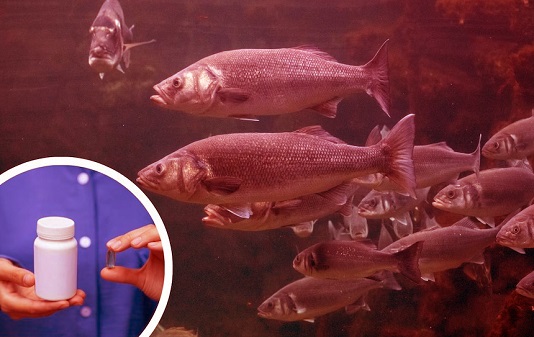Nikhil Prasad Fact checked by:Thailand Medical News Team Dec 16, 2024 10 months, 2 weeks, 1 day, 18 hours, 31 minutes ago
COVID-19 News: The COVID-19 pandemic brought unprecedented challenges to global health systems and societies, leading to the rapid development and increased use of antiviral drugs. While these drugs saved countless lives, their potential environmental impacts have raised significant concerns. A recent study by researchers from the University of Zagreb’s Faculty of Chemical Engineering and Technology sheds light on the toxicity of six key antiviral agents and their mixtures, sparking a much-needed discussion on the environmental footprint of pharmaceutical treatments.
 Overview of the Study
Overview of the Study
This research focused on six antiviral drugs used to combat COVID-19 infections: atazanavir, emtricitabine, nirmatrelvir, oseltamivir, ribavirin, and sofosbuvir. By employing the marine bacterium Aliivibrio fischeri as a test organism, the scientists explored the acute toxicity of both individual drugs and their binary mixtures. This
COVID-19 News report delves into the findings, highlighting the need for greater awareness and regulatory oversight regarding the environmental release of antiviral substances.
The study’s significance lies in its dual focus: assessing the environmental toxicity of individual antiviral agents and examining the combined effects of drug mixtures. Given the persistent presence of SARS-CoV-2 and the likelihood of continued antiviral use, this research underscores the urgent need for comprehensive environmental monitoring.
Methodology at a Glance
The researchers followed the ISO 11348-1:2007 standard, which assesses acute toxicity by observing the bioluminescence inhibition of Aliivibrio fischeri. The luminescence emitted by this marine bacterium diminishes when exposed to toxic substances, providing a reliable measure of their environmental impact. The study also analyzed the effects of binary drug mixtures, using both the concentration addition model and the independent action model to predict and compare toxicity outcomes.
Key Findings
The research revealed striking variations in the toxicity levels of the six antiviral drugs. Among them, atazanavir emerged as the most toxic, followed by ribavirin, emtricitabine, nirmatrelvir, sofosbuvir, and oseltamivir. Atazanavir’s toxicity was nearly two orders of magnitude higher than that of the least toxic drug, oseltamivir. This significant difference highlights the varying degrees of environmental risk posed by these pharmaceuticals.
The findings also demonstrated the toxic behavior of binary drug mixtures, with most combinations exhibiting additive effects. However, certain mixtures deviated from this pattern, showing either synergistic or antagonistic toxicity. For example:
-Synergistic Toxicity: Mixtures of ribavirin with atazanavir, oseltamivir, and sofosbuvir, as well as combinations of emtricitabine with atazanavir and nirmatrelvir, displayed enhanced toxicity levels beyond what was predicted by additive models.
-Antagonistic Toxicity: The combination of nirmatrelvir and sofosbuvir exhibited reduced toxicity compa
red to predictions, suggesting potential antagonistic interactions.
The study highlighted the complex dynamics of drug interactions, emphasizing that toxicity predictions for mixtures require careful consideration of both additive and independent action models.
Implications for Environmental Risk
The release of pharmaceutical compounds into aquatic ecosystems occurs through various pathways, including human excretion, hospital wastewater, and improper drug disposal. Conventional wastewater treatment plants often fail to completely remove these substances, allowing them to enter natural water bodies. The presence of antiviral drugs in surface and drinking water has already been documented in several regions worldwide, underscoring their pervasive nature.
For example, oseltamivir phosphate concentrations of 165.9 ng/L were detected in Japanese surface water, while emtricitabine levels reached up to 358.4 ng/L in South African drinking water. These findings suggest that the environmental presence of antivirals is a global concern, with potential risks to aquatic organisms and ecosystems.
Factors Influencing Toxicity
The study identified molecular properties that may influence the toxicity of antiviral agents:
-Hydrophobicity (LogP): Drugs with higher logP values, indicating greater hydrophobicity, tended to exhibit higher toxicity. This correlation was particularly evident for atazanavir, nirmatrelvir, oseltamivir, and sofosbuvir.
-Molecular Size: Larger molecules appeared to exert greater toxic effects, possibly due to their ability to interact with cell membranes more effectively.
These findings suggest that both the physicochemical properties of individual drugs and their interactions in mixtures contribute to their overall toxicity profiles.
Conclusions
The study’s conclusions call for urgent action to address the environmental risks posed by antiviral drugs. Key takeaways include:
-Atazanavir’s High Toxicity: The extreme toxicity of atazanavir necessitates its careful monitoring and potential inclusion in environmental risk assessments.
-Complex Drug Interactions: The synergistic and antagonistic behaviors observed in drug mixtures highlight the need for comprehensive toxicity testing of pharmaceutical combinations.
-Regulatory Measures: Enhanced regulations and improved wastewater treatment technologies are essential to mitigate the environmental impact of antiviral drugs.
-Further Research: The study underscores the importance of expanding toxicity assessments to include other organisms, such as algae, fish, and crustaceans, to better understand the broader ecological implications.
By shedding light on the environmental challenges associated with antiviral drug use, this research provides a crucial foundation for future studies and policy development. Addressing these issues will be essential to safeguarding aquatic ecosystems and ensuring sustainable pharmaceutical practices.
The study findings were published in the peer-reviewed journal: Water.
https://www.mdpi.com/2073-4441/16/24/3607
For the latest
COVID-19 News, keep on logging to Thailand Medical News.
Read Also:
https://www.thailandmedical.news/news/breaking-news-covid-19-research-shows-that-sars-cov-2-coronavirus-can-survive-in-water-for-up-to-25-days-and-could-also-be-water-borne
https://www.thailandmedical.news/news/latest-stanford-study-finds-that-excessive-ventilation-favors-sars-cov-2-survival-and-spread-as-low-humidity-is-conducive-for-viruses
https://www.thailandmedical.news/articles/coronavirus
